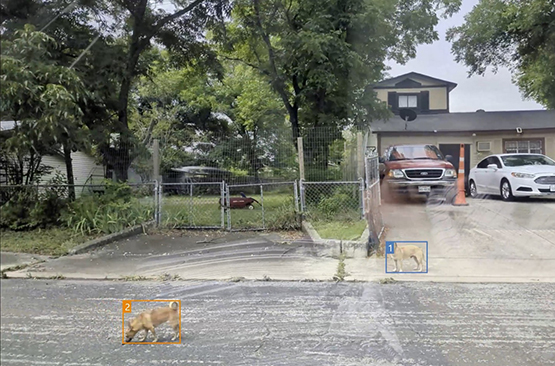Background
The growing population of stray dogs in San Antonio and other cities has become a pressing issue. Stray dogs have been responsible for numerous attacks on people and their pets, leading to multiple fatalities. A first step in addressing this issue is characterization of the population and geographic distribution of wandering dogs. Under this effort, SwRI researchers developed a computer vision-based workflow which provides automated detection and localization of unaccompanied dogs in an urban environment.
Approach
The automated population survey system includes an app which runs on an Android smart phone which may easily be installed in a passenger vehicle. The application continuously collects short videos and evaluates these to determine which videos contain dogs. Screened videos are delivered to backend software running on a standard PC which performs further processing and organizes the resulting dog population data for review. Summary results include time of detection, location, number of dogs present, and an initial classification of the dogs as wandering or owned based on the presence of nearby humans. Videos containing detections are retained for human review and more detailed manual analysis.
Accomplishments
The research produced a reliable workflow for flexible and low-cost computer vision systems for the characterization of urban environments and applied this capability to evaluation of wandering dog populations. Final system evaluation undertook an approximately one-hour test in a dense, visually cluttered residential area. The system detected 13 dogs, several of which were not noted by the human observers conducting the test. The approach provides a false detection rate, output of videos which do not contain dogs, of 2.4%. It provides accurate detection and localization of 80% of wandering dogs.

Figure 1: The detection system employs low-cost commercial smart phones for data collection. Phones may be easily installed in a variety of vehicles using only a suction-cup mount and power cord.

Figure 2: The automated system detects wandering dogs in video frames. Individual animals are tracked over video frames, and accurate location and count information reported.

